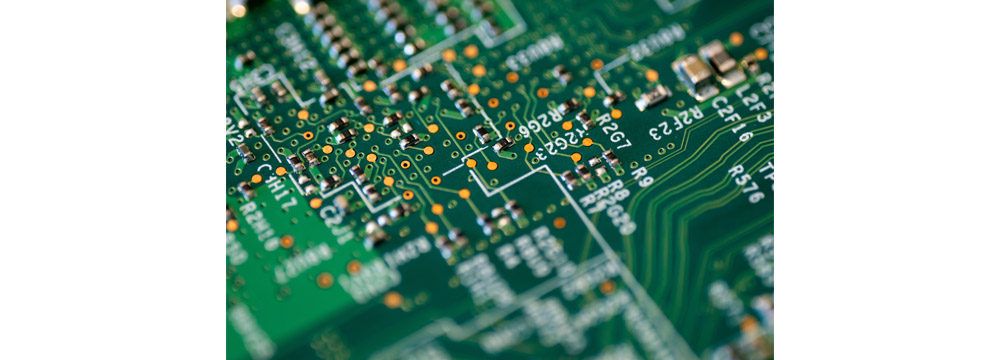With the development and innovation of power electronics technology, switching power supply technology is also undergoing continuous innovation. Currently, switching power supplies, characterized by their compact size, lightweight, and high efficiency, are widely used in nearly all electronic devices and are an indispensable power source for the rapid development of today's electronic information industry.
There are two types of modern switching power supplies: DC switching power supplies and AC switching power supplies.
This article focuses on DC switching power supplies, which convert low-quality raw power (rough power), such as mains or battery power, into a high-quality DC voltage that meets the requirements of the equipment. The core of a DC switching power supply is the DC/DC converter.
Thus, the classification of DC switching power supplies is based on the classification of DC/DC converters. In other words, the classification of DC switching power supplies is essentially the same as that of DC/DC converters, and the classification of DC/DC converters is essentially the same as that of DC switching power supplies.
A switching power supply generally consists of four major components: the main circuit, the control circuit, the detection circuit, and the auxiliary power supply.
1. Main Circuit
Inrush current limiting: This function limits the inrush current on the input side at the moment the power is turned on.
Input filter: Its function is to filter out grid noise and prevent noise generated by the unit from being fed back into the grid.
Rectification and filtering: Directly rectifies the grid AC power into smoother DC power.
Inversion: Converts rectified DC power into high-frequency AC power. This is the core component of a high-frequency switching power supply.
Output rectification and filtering: Provides stable and reliable DC power according to load requirements.
2. Control circuit
On the one hand, it samples the output, compares it with the set value, and then controls the inverter to adjust its pulse width or frequency to stabilize the output. On the other hand, based on the data provided by the test circuit and verified by the protection circuit, the control circuit implements various protection measures for the power supply.
3. Detection circuit: Provides various operating parameters and instrument data for the protection circuit.
4. Auxiliary power supply: Enables software (remote) startup of the power supply and provides power to the protection circuit and control circuit (such as PWM chips).

The following are some classic answers about switching power supplies.
1. If a switching power supply transformer uses copper strip instead of enameled wire, how is the allowable current calculated? For example, how do you calculate the current allowed to flow through a 0.1mm thick copper strip?
Expert Answer: If copper strip is used instead of enameled wire in a switching power supply transformer, the eddy current loss of the copper strip (enameled wire) can be greatly reduced, and the operating frequency can be increased accordingly, but the DC loss remains almost unchanged. The current density allowed through the copper strip should generally not exceed 4.5A/mm². The current density is equal to the current divided by the cross-sectional area of the conductor. The cross-sectional area of the conductor is equal to the thickness (0.1mm) multiplied by the width (the width of the copper strip).
2. Are the AC circuits of the power switch and the rectifier the most likely to generate electromagnetic interference?
Expert Answer: The most serious source of electromagnetic interference in a switching power supply is the circuit consisting of the primary and secondary coils of the switching transformer. However, this interference can cause radiated and conducted interference to other circuits through induction. The most serious source of conducted and radiated interference is the power cord. This is because the power cord can easily become a half-wave dipole antenna, a radiation source. Furthermore, it is connected to external circuits, making it easy to transmit interference signals to other devices. Therefore, the power cord must be effectively isolated at the input of the switching power supply.
3. What are some specific methods for reducing transformer temperature rise?
Expert Answer: One way to reduce transformer temperature rise is to lower the maximum magnetic flux increment (Bm) of the transformer core, as transformer core losses (hysteresis and eddy current losses) are proportional to the square of the magnetic flux density. Another method is to reduce the operating frequency of the switching power supply, as transformer core losses (hysteresis and eddy current losses) are proportional to the operating frequency. A third method is to reduce coil losses. Coil losses (primarily eddy current losses), along with eddy current and skin effect losses, are also proportional to the operating frequency. To reduce coil DC losses, the current density of the wire must be reduced. Generally, the current density of enameled wire cannot exceed 4.5A/mm².
4. How does the duty cycle of a flyback switching power supply change?
Expert Answer: The duty cycle of a flyback switching power supply is primarily determined by the input voltage and the withstand voltage of the switching power supply diode. The duty cycle also changes with changes in the input voltage. For example, when the input voltage is 260V AC, if the power switch has a withstand voltage of 650V, the duty cycle is as high as 0.306; when the input voltage is 170V AC, the duty cycle is approximately 0.5; and when the input voltage is lower than 170V AC, the duty cycle is greater than 0.5. Regardless of the input voltage fluctuations, the switching power supply will adjust the duty cycle to stabilize (or change) the output voltage.
5. What is the main difference between forward and flyback?
Expert Answer: A forward switching power supply provides power when the power switch is on, but no power is output when it is off. A flyback switching power supply is the opposite. When the power switch is on, it only stores energy in the transformer and does not provide power to the load. It only provides power to the load when the power switch is off. The output voltage of a forward switching power supply is the average value of the rectified output voltage, while the output voltage of a flyback switching power supply is the half-wave average value of the rectified output voltage. The two voltage outputs have opposite phases.
6. Can you explain the loop design in detail?
Expert Answer: The gain of the feedback loop is neither too high nor too low. When the gain of the feedback loop is too high, the output voltage will track around the average value, causing significant fluctuations. The higher the gain, the greater the fluctuations, and in severe cases, oscillation. When the gain of the feedback loop is too low, the output voltage will become unstable because the voltage tracking is not adequate, resulting in a hysteresis error.
To ensure stable output voltage without oscillation, the feedback loop is generally divided into three loops: one to determine the differential gain, another to determine the integral gain, and a third to determine the DC gain. This ensures that the loop gain is high when the error signal is small and low when the error signal is large. In other words, the error amplifier gain is dynamic. By carefully adjusting the gains of these three feedback loops, a stable switching power supply can be achieved without oscillation.
7. How can the MOS transistor (MOS) of the flyback power supply switch be minimized, especially under hard switching conditions?
Expert Answer: Reduce the duty cycle. However, if the duty cycle is too low, the power supply's operating efficiency will be significantly reduced, and the voltage adjustment range will also be reduced.
8. What percentage of the power supply's losses does copper foil loss account for?
Expert Answer: Very small. If the copper foil loss is high, the temperature rise will be very high. If it exceeds 80 degrees Celsius, the paint on the copper foil will turn yellow. However, it is only equivalent to the loss of a 1-3 watt metal film resistor at the same temperature rise.
9. What causes the ripple problem in the drive waveform? I have a power supply. The output drive is normal at low AC voltages of 85-120V. When the voltage increases to 120-150V, the drive exhibits ripples, and the output current drops significantly. When the voltage is increased to 150V-265V, the frequency of the drive waveform becomes completely wrong, and the output is also incorrect.
Expert Answer: This situation can occur if your driver circuit uses a capacitor or transformer output. This is because the waveform (signal) transmitted by a capacitor or transformer cannot contain a DC component. If it does, the output waveform will be severely distorted. Only when the driver circuit's output waveform has a duty cycle of 0.5 will the output waveform be free of distortion. Duty cycles that are too large or too small will cause distortion.
10. I'd like to ask about choosing a rectifier bridge. What rectifier bridge should I choose for different power levels? Also, I built a 30W power supply using a 3A, 700V rectifier bridge, and I noticed it was very hot, reaching over 60°C within a few minutes. What are the causes of this heating?
Expert Answer: The selection of rectifier diodes is primarily determined by three parameters: the current flowing through the rectifier diode, its withstand voltage, and the operating frequency. When designing circuit parameters, the current flowing through the rectifier diode should generally be only one-third of the nominal value (at 25°C), as the operating temperature of the rectifier diode can rise above 80°C. If the rectifier diode's turn-on and turn-off speeds are very slow, it will continue to conduct for a period of time even when the voltage is reversed, resulting in a very large reverse current, which will also cause the rectifier diode to heat up. Your rectifier bridge heating may be due to the latter situation.

11. How do I design and compensate the feedback loop? I hope you can patiently explain.
Expert Answer: The gain of the feedback loop is neither too high nor too low. When the gain of the feedback loop is too high, the output voltage will fluctuate around the average value. The higher the gain, the greater the fluctuation, and in severe cases, oscillation will occur. When the gain of the feedback loop is too low, the output voltage will become unstable. To ensure stable output voltage without oscillation, the feedback loop is generally divided into three loops: one to determine the differential gain, another to determine the integral gain, and a third to determine the DC gain. By carefully adjusting the gains of these three feedback loops, you can achieve a stable switching power supply without oscillation.
12. I'm currently working on a DC-to-DC converter, but the efficiency is a bit low. How can I solve this problem?
Expert Answer: Reduce the operating frequency or replace the power supply switching transistor with a high-speed switching transistor. Alternatively, increase the size of the transformer and reduce the maximum magnetic flux density (Bm). This means increasing the number of turns in the primary winding of the switching transformer. This is because the hysteresis loss and eddy current loss of a switching transformer are proportional to the operating frequency and the square of the increase in maximum magnetic flux density.
13. Hello, how do you calculate the minimum DC voltage? I've looked through several versions and can't find the most suitable one.
Expert Answer: I'm not sure what you mean by "minimum DC voltage" here. If it refers to the minimum input DC voltage of a switching power supply, it can generally be calculated based on the minimum input AC voltage. For example, if the minimum input AC voltage is 100V (RMS), the minimum DC input voltage is approximately 120V (average value). This is because the maximum value after rectification and filtering is 140V and the minimum value is 100V, so the average value is 120V. If the minimum DC voltage is the positive feedback voltage of a transistor-based self-oscillating switching power supply, it's best to choose this voltage as twice the transistor's operating voltage when it's conducting, leaving a margin of one times for adjustment. If the minimum DC voltage is the minimum operating voltage of the field-effect transistor driver circuit, this operating voltage must be at least 16V, because high-power field-effect transistors require a drive voltage of at least 12V (preferably 20V) for deep saturation.
14. I'm experiencing glitches on the output side of a flyback transformer power supply I'm building, and the frequency of the glitches is the same as the primary switching frequency. How can I eliminate these glitches?
Expert Answer: A small inductor is connected between the secondary rectifier and the filter capacitor, but the inductor cannot saturate when DC flows through it. The magnetic circuit of this inductor cannot be closed; a large air gap is required.
15. How can I optimize the switching frequency of a flyback power supply? How can I optimize the VOR flyback voltage setting, and under what circumstances is it most suitable? Thank you! How can I optimize the turns ratio?
Expert Answer: The choice of operating frequency for a flyback switching power supply is primarily related to the power supply's efficiency and size. The efficiency of a switching power supply, in turn, is primarily related to the losses (hysteresis and eddy current losses) of the switching diode and switching transformer, both of which are proportional to the frequency. Switching diode losses primarily consist of turn-on loss (on-time loss) and turn-off loss (off-time loss). The longer the switching diode's on-time and off-time, the greater these two losses.
High-power switching diodes generally have much longer on-times and off-times than low-power ones, so the operating frequency of high-power switching power supplies is typically lower. When considering the efficiency of a switching power supply, considering its size and cost, an efficiency of around 80% is optimal. At this level, the switching diode's losses account for approximately 50% of the total losses, the switching transformer's losses account for approximately 30%, and the losses in the remaining circuits account for approximately 20%. The turns ratio of a switching transformer is related to the ratio of input to output voltage, and thus to the duty cycle of the switching power supply.
16. How do I set the initial peak current IP, flyback voltage VOR, and the optimal duty cycle of a flyback power supply?
Expert Answer: The flyback voltages generated by the primary and secondary windings of a flyback switching power supply are both related to the duty cycle of the switching power supply and the input voltage. When selecting the duty cycle of a switching power supply, it is important to consider that the sum of the peak flyback voltages generated by the primary and secondary windings and the operating voltage (input voltage) cannot exceed 0.7 times the withstand voltage (Bvmax) of the power supply switching transistor. Based on this condition (Bvmax), the maximum duty cycle (Dmax) of the flyback switching power supply at the highest input voltage can be calculated. For example, for a power switching transistor with a Bvmax of 650V, its duty cycle can only be selected to be around 0.306 at an input voltage of 260V AC.
Share our interesting knowledge and stories on social media













